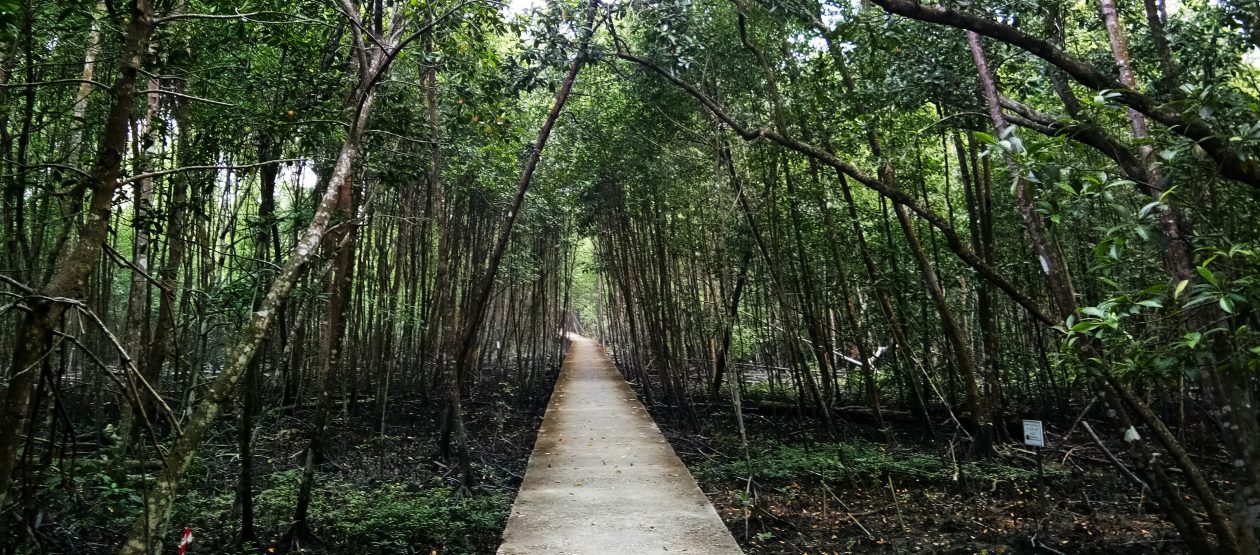CLICK BELOW FOR AUDIO GUIDE
Excoecaria agallocha, commonly known as milky mangrove or blind-your-eye mangrove is an evergreen, or briefly deciduous shrub or small tree growing from 10 to 30 metres tall. Roots run along the ground surface and often knotted and covered with lenticels. Leaves thick, oval and pointed (5-10cm long), arranged alternately in a spiral. Young leaves are pink, old leaves turn yellow then red before dropping off. Leaves usually drop off after dry weather. Flowers are very small, densely crowded on slender and flowering branches. Male flowers occur on spikes which grow singly in the axils of leaves, from 5 to 10 centimetres long. Female flowers are born on branches, 2 to 3 centimetres long. The fruits are small (less than 1cm) three-lobed, green turning black as they ripen into dry capsules. Each capsule is made up of three portions, containing tiny dark to black seeds.

Like other mangrove plants, Milky mangrove timber is also well-known to be used as a firewood. Nonetheless, the white milky latex from the leaf as shown in the picture is poisonous and can cause severe skin irritation and temporary blindness if contact is made with the eyes. Also, the sap is used for fish poison.

In traditional medicine, the latex, leaves, roots and bark of the milky mangrove also have their uses. The latex used in healing of obstinate ulcers. Smoke from burning wood used for leprosy. Decoction of leaves used for epilepsy; also applied to ulcers. Even dried and powdered leaves retain the poison and can kill fish very quickly or be used on a poison dart. Roots, less poisonous than above-ground parts, are pounded with ginger and used to make embrocation for swellings of the hands and feet.
